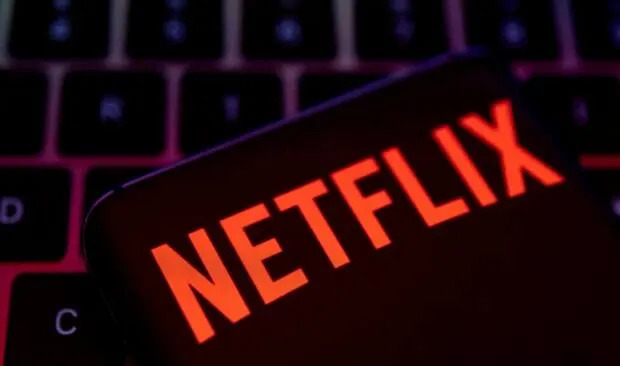What lies ahead for frontline polio workers in a polio-free Pakistan?
Over 350,000 frontline workers in Pakistan are dedicated to ending polio in Pakistan, of whom over 60 per cent are women. Female polio workers have long been considered game changers for polio eradication in the country because of their strong community networks and comfort level with mothers.
This year’s first case in Pakistan wasn’t reported until March 2023, when a three-year-old boy from Bannu, Khyber Pakhtunkhwa, tested positive for the virus. As polio eradication becomes a closer reality for Pakistan, and with intensive measures being employed to tackle its transmission, it is essential to think about the future of frontline polio workers in the country.
A post-polio world for female polio workers
Since the Global Polio Eradication Initiative in 1988, the number of children affected by polio has reduced by 99pc. Over the years, a large-scale systematic exercise was carried out in Pakistan to involve female workers as valuable contributors by listening to their concerns and applying their recommendations to eradicate the virus. The exercise also encouraged and helped them prepare for a career transition post-polio.
It is crucial to start looking into how the polio workforce, an estimated over 350,000 people, can find other opportunities once the virus is eradicated from the country. “It is very important to me that when we end polio in Pakistan, we don’t just pack up and leave; that we build systems and create opportunities to serve the workforce, a majority of them women, and find some way, however small, to give back to the people who have worked tirelessly to protect the children of our country,” said Dr Shahzad Baig, coordinator at the Emergency Operations Centre — a central command and control facility that is overseeing the polio vaccination campaign in the country.
Twenty-two-year-old Laiba Noor, an area in charge of a union council in Dera Ismail Khan (DI Khan), said she had high hopes for her career once polio was completely eradicated. She has been in the field for the last three years and supervises four mobile teams responsible for door-to-door coverage as well as a centre at a dispensary for maternal and child health in her union council. “This is not my only job experience. I collected data for a survey being conducted by the World Food Programme in my area, and I believe there are plenty of other opportunities for women like me,” she said.
For Noor, working in the field had given her confidence and enabled her to develop various skills along the way. “I know my area quite well, including the people residing here. I am used to managing the day-to-day affairs of workers under my supervision,” she explained, adding that not working is never going to be an option for her even after polio is completely eradicated.
Nabiha Naeem, a community mobiliser in DI Khan echoed Noor’s optimism. She expressed the belief that her current job had taught her a great deal about the area she lived in and its people. She hopes to work with a non-governmental organisation so she can continue to help the people in her community to the best of her ability.
Mehrunnisa from KP’s Tank district, who also works as a supervisor for lady health workers (LHWs) in her area, shared that she hopes to start her own stitching centre. “I want to teach embroidery and stitching to young women,” she said.
A series of 14 two-day workshops were held by the EOC across Pakistan between September 2022 and March 2023 on co-designing solutions with female frontline workers and to take their suggestions on ways to address their challenges. Prior to the workshops, almost 5,000 workers were surveyed, where they were asked about the main challenges they face in the field. The workshops also focused on formulating a roadmap for their career transitions post-polio, and asking them what support they need in aqcuiring new skills and finding other job opportunities.
In one exercise, the women were asked what skills they had acquired over time in their roles as frontline workers against polio. These skills were then linked to possible future opportunities.
The women from Tank shared that they gained confidence, developed patience, gained community knowledge, and acquired data collection skills. Many of them were confident that they possessed the skills to become census enumerators, lady health workers, CSS officers, data collectors, computer operators, entrepreneurs, and teachers, among other professions.
Noor, however, believes that while female polio workers have plenty of opportunities available, most of them miss out on these due to lack of awareness. “I hope there is awareness in our communities about job opportunities. A lot of us miss out on good opportunities because we remain unaware about them,” she said.
During the workshop in Tank, one of the workers suggested that job opportunities be posted at the basic health units in their district.
Rains, refusals and resilience
“Frontline workers are the pillars of the Polio Eradication Initiative and the face of Pakistan’s sincerity, perseverance and hard work,” Dr Baig remarked. “It is a huge task to reach over 40 million children under five in every corner of our diverse country — and that is the work frontline polio workers do. Their commitment and dedication is inspirational,” he added.
Women engaged in immunisation work face an environment that can prove to be harsh, tiresome, distressing, and sometimes even dangerous. Female frontline workers include vaccinators, campaign coordinators, supervisors, and community mobilisers among others. They brave difficult terrains, extreme weather, and threats for the work they do.
Read more: Lady health workers: The unsung heroes of Pakistan’s healthcare system
Meherunnisa shared that her work hours are long and tiring when a drive is under way. She leaves her house at 8am and returns after 12 hours. On her return, she is expected to take care of her children, serve food to her husband and in-laws, and to clean the house. As a ‘dutiful’ wife and mother, she performs all her household chores and once everyone has slept, she prepares for her next day at work.
She has been working as a frontline worker for the last 10 years. “We work tirelessly to ensure that children in our districts are vaccinated on time,” she remarked, adding that even in extreme weather conditions, they are obligated to perform their duties.
“Last March proved to be quite challenging due to the heavy rains,” she said. Along with other frontline workers, she requested the supervisors to provide them time to complete the drive on a different date but no one listened.
Reminiscing her experience, she said: “Whenever I go to the field, I wear a ‘shuttlecock’ burqa (a local term for a veil with a mesh net eyepiece). My burqa and clothes were completely drenched, they were sticking to my body making me uncomfortable. I was exhausted but I continued with the drive because it’s my work.
“During this period, many women even quit because they thought the effort was not worth the meagre compensation. It does affect our motivation levels too. But I focus my energy on serving my community and meeting my targets.”
“The rains last year were quite tough for all of us,” shared Kulsoom Rafique, who has been working as an area incharge in Tank. “The sheet on which we mark which houses have been covered was completely wet … we couldn’t even write on it properly,” she said. “Some areas were flooded but we couldn’t stop. We had to continue and do our job,” she added.
“There have been many times when we have been threatened and verbally abused by parents when we go to their doors,” said Mehrunnisa. “But we have to keep going to them again and again because of our duty.” Many female vaccinators have raised concerns that they are not comfortable with visiting the houses of people who refuse to vaccinate their children. So as a temporary solution, another team is sent to those houses.
The most difficult part of the job is handling refusals, shared Naeem. “People shut their doors on our face; they hurl abuses at us, scream at us, misbehave with us and refuse to cooperate. Families unwilling to vaccinate their children often scream at us for visiting them again and again. I remember a woman once screaming at me for not showing up at her doorstep when she needed medicines and visiting her during the drive. Sometimes families just won’t open the door even though you can tell there are people inside,” she added. “I have to tolerate this and a lot more because it’s my duty.”
For others, the families they approach may not be hostile, but they have different challenges to contend with. Maria Ayub, a vaccinator in Tank, shared that in her experience of two years no family has misbehaved with her. Her biggest concern, however, has been the additional expenditure she has to incur during the drives. “My biggest expenditure is on transport. It sometimes costs me Rs300 or more a day,” she said, adding that she uses her income from the drives to fund her higher education. “When there is a drive, I take off from my college and my teachers are quite supportive in this regard.” She is, however, on the lookout for better work opportunities.
Concerns about transportation were shared by Rafique too: “I am not given any transport allowance and I won’t lie, sometimes, it does become really difficult for me to travel to far flung areas. The team has to arrange for a car and a driver to take us there, other times I ask my brother to take me on his motorcycle.”
“The work we do is burdensome, but you can’t take it lightly either,” remarked Noor. Her career choice has raised concerns among her extended family: “My aunts and uncles told my parents to encourage me to find another job because of the long hours. Once the campaign starts, we are required to work from 8am to 8pm, at least.”
Contrarily, her parents never questioned her decision and always encouraged her. She added that the job comes with its own perks as many people in her community respect her and address her as “madam”.
She shared that misinformation and misconceptions about the virus have been posing a major threat to the immunisation drive. Many people have been making videos, spreading false information about polio vaccinations and workers. Noor shared that there is an urgent need to counter such videos with factual and accurate videos from doctors and officials about the vaccine to raise awareness. “This will prove to be helpful the next time a family shows us a fake video … we will be able to counter it by showing them videos giving out authentic and credible information,” she added.
Polio in Pakistan
Afghanistan and Pakistan are the only two countries where the wild poliovirus type 1 (WPV1) remains endemic. In Pakistan, seven districts of southern KP — Tank, Bannu, DI Khan, Lakki Marwat, North Waziristan, and Upper and Lower South Waziristan — have been categorised as polio endemic zones.
“We have been very successful so far in containing the virus to the polio endemic districts in southern Khyber Pakhtunkhwa and this year, we hope to eliminate the virus in these areas. If we finish polio in southern KP, a polio-free Pakistan is very much a reality,” Dr Baig said optimistically.
In January 2023, two environment samples collected from Lahore tested positive for WPV1, while the last human case from Lahore was reported in July 2020. After the detection, over 6.37 million children younger than five years were vaccinated against polio in an immunisation drive conducted in 39 districts from Feb 13 to 17. Another drive was held in March in two phases with the aim to vaccinate 21.54 million children.
With years of intensive immunisation, increased monitoring and rapid responses, a polio-free Pakistan seems to be a possible and close-by reality. With this, let us not forget the workers who have made this reality possible.








